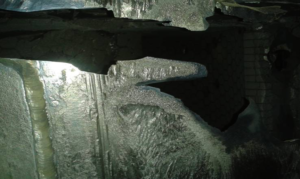with A S Sahney & Soni Malik, Indian Oil Corporation Ltd, Gujarat Refinery
 Fluidized catalytic cracking unit (FCCU) at IOCL – Gujarat Refinery is currently operating at 120% of its design capacity. The unit has been facing shutdown almost every year due to leaks in the slurry circuit and excessive catalyst loss from the Regenerator side. Reasons for the same are attributed to severe erosion leading to damages either in Reactor or Regenerator cyclones and associated hardware.
Fluidized catalytic cracking unit (FCCU) at IOCL – Gujarat Refinery is currently operating at 120% of its design capacity. The unit has been facing shutdown almost every year due to leaks in the slurry circuit and excessive catalyst loss from the Regenerator side. Reasons for the same are attributed to severe erosion leading to damages either in Reactor or Regenerator cyclones and associated hardware.
In the present refining market, where operational flexibility and longer intervals between turnarounds for FCC units are the essence to improving profitability; the recurring damages in the hardware leading to unplanned shutdowns adversely affects the unit performance.
The methodical troubleshooting carried out to overcome the problem, identified the probable causes for high catalyst losses from Reactor & Regenerator side. It was based on analysis of fresh and equilibrium catalyst physical properties, microscopic analysis of equilibrium catalyst particles, pattern of equipment & piping failures, pressure balance of the system and variation in operating conditions. After the problematic areas were identified, a ‘step by step’ approach was followed to understand and resolve the issues in order to improve reliability of the unit.
The catalyst loss from Regenerator side due to higher superficial velocities was addressed by carrying out pressure balance across the cyclones and thereby reducing overall length of primary & secondary diplegs. Waste air (34 vol% O2) from Nitrogen plant was routed to FCC Air Blower suction hood to enhance Regenerator performance and enable overall reduction of air.
Reactor side catalyst loss was tackled by weight addition to counter-weight flapper valves of all 3 cyclone diplegs. Inclination of internal riser due to improper repair of one of the disengaging arms has also been examined in this paper. After witnessing the erosion pattern in the barrel & cross-over duct of the Reactor cyclones, vortex breakers arranged in a typical pattern at the outlet of internal riser were incorporated in the system. The concept of providing vortex breaker was to reduce the velocity of spinning solids, reduce erosion and disturb the central vortex.
The present paper elucidates each of the above issues and shall aid refiners to troubleshoot frequently encountered problem of high catalyst loss.
Related posts








Leave a Reply